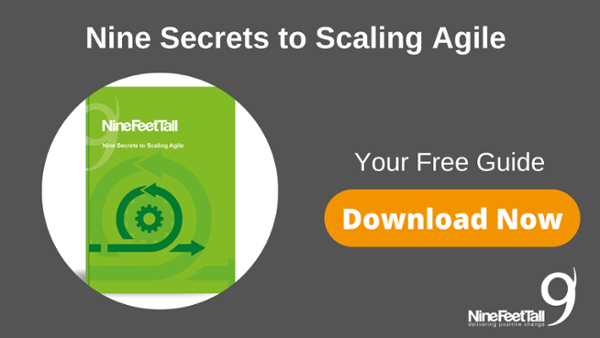The Scaled Agile Framework (SAFe) is a culmination of the best practices of Agile teams and Lean thinking from the manufacturing world. By taking an approach that works well for small teams, and applying it to the whole organisation it can maximise value and minimise waste. SAFe is particularly useful for larger organisations who are looking for a framework to guide the development and implementation of Agile methods across their teams. If this all sounds useful but you would like to know more about the Agile delivery first, then maybe start with this recent blog: The Agile Manifesto Explained in 5 Minutes before reading on.
Larger organisations inherently have their own challenges; with scale comes structure, bureaucracy, and inertia. This creates or reinforces culture and in turn hugely influences how people go about their daily duties. “Enterprises must embrace a more fluid way of working to compete effectively—one that quickly allows for new technologies to be assessed, tested, analyzed, and acted upon. This ‘fail fast, succeed faster’ mentality requires a fundamental shift in work culture and behaviour”.[1]
Scaled Agile arose from the concepts of Lean, Kanban, Scrum, Extreme Programming and the Principles of Product Development Flow. Differing from the Agile Manifesto’s 12 principles, SAFe is based on four key values:
- Alignment – there should be a common strategic thread running throughout the portfolio.
- Built-in Quality – quality standards are maintained throughout iterations.
- Transparency – this is provided through a readily available backlog, in order to enable trust.
- Programme Execution – high commitment to continuous delivery is essential.
Typical results reported by SAFe include 30% happier, more motivated employees; 50% faster time to market; 50% defect reduction; and 35% increase in productivity, often paying off in the early stages of implementation. Most organisations looking at SAFe will start with a rollout to a single team or product, learn fast and incrementally deploy more widely.
Would SAFe be a good fit for you?
- Do you feel you need to respond more quickly to market pressures and embed more urgency to adapt?
- Is employee engagement, productivity and morale as high as it could be?
- Is programme execution, in terms of timeliness, reliability and quality an issue for your organisation – particularly in the face of external commitments?
- Do expectations need to be better managed through, dependency management, transparency and trust?
All of these challenges are more are at the heart of the implementation of Scaled Agile.
There are however barriers and challenges worth noting when seeking to implement a SAFe approach. Agile purists would argue that the approach necessitates too much planning and process definition before it can be put into practice. Indeed, carefully orienting the approach around a centralised business strategy does require more rigorous work upfront than a simpler Agile framework for a single product. You would need to weigh up whether the scalability was worth the initial effort and business wide deployment and adoption.
Other commentators would note that SAFe has a more top-down approach to the team-based Agile methodology. Again, there is a balance to be struck around just enough leadership to be mobilised whilst still being Agile. Often larger, more complex programmes can benefit from some top-down direction.
If the SAFe sounds like it might be valuable to your organisation, you are fortunate to have many free resources for implementing the framework available online. Contact EstherM@NineFeetTall.com to discuss making this work for your organisation.
